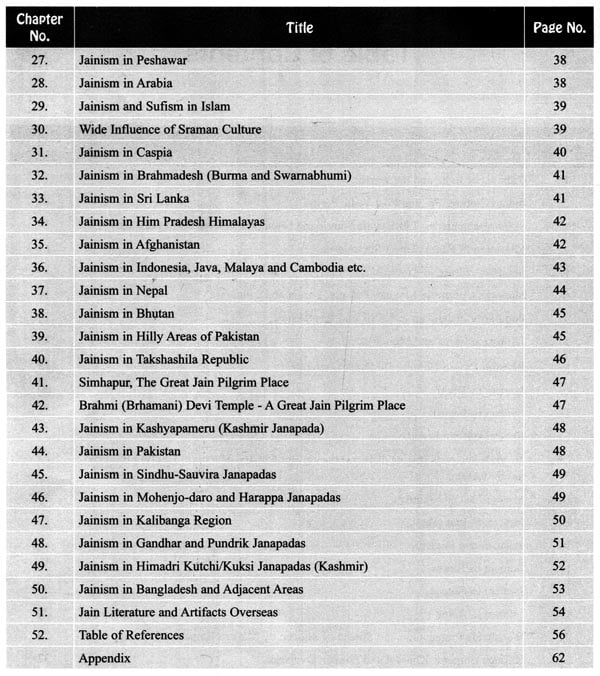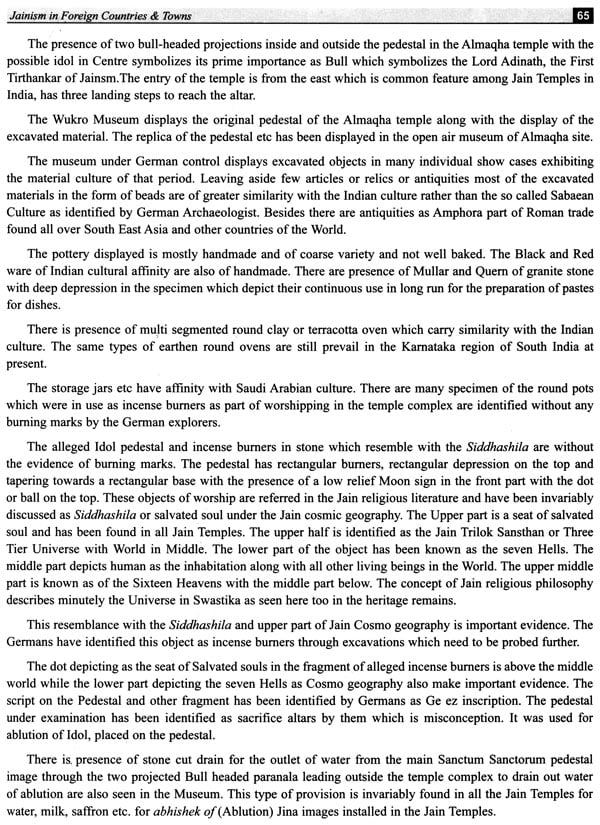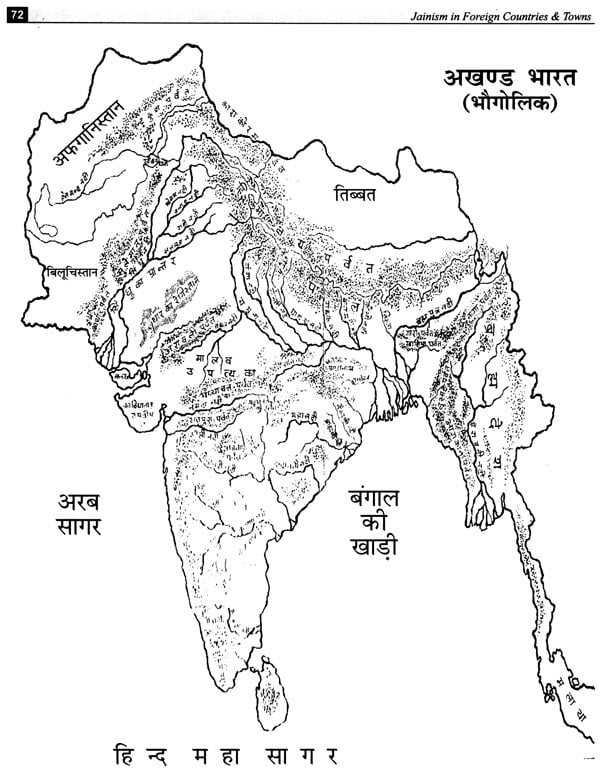
Jainism in Foreign Countries & Towns
Book Specification
| Item Code: | NAP659 |
| Author: | Dr. Gokul Prassad Jain |
| Publisher: | Shri Bharatvarshiya Digambar Jain Mahasabha |
| Language: | English |
| Edition: | 2018 |
| Pages: | 76 (3 B & W Illustration) |
| Cover: | PAPERBACK |
| Other Details | 11.00 X 8.50 inch |
| Weight | 300 gm |
Book Description
Six thousand years ago, a metropolitan town, known as Kalibanga in Northern India, was situated on the banks on River Saraswati. It was the capital of spiritualist Anujanpad. Jainism' was very popular there. Ganganagar in Rajasthan and its vicinity were parts of Kalibanga. Ships via sea route from Egypt, Sumeria etc used to come to Chanhudado, Mohanjodaro and Kalibanga ferrying trade goods and people. India had cultural and trade relations with these countries. Onasi was Jain preceptor (acharya) of Anujanpad. He was an expert of Philosophy, Jain metaphysics, economics, and political science.
Similarly, around 5500 years ago, India had strong cultural and trade relations with Egypt and surrounding countries of North Africa continent. Trade, agriculture, town planning and construction of canals were highly developed. Spirituality and equanimity based republic traditions prevailed there. Menes was the first popular ruler of Egypt who followed philosophy of Anujanpad. According to old inscription in Egypt, we find Narmer as another name of Menes.
Approximately 4500 years ago, people in Sumeria were followers of spirituality. Jainism was very popular there. Democratically elected government tradition of leadership based on elected rulers prevailed there. Their most famous spiritual leader Jan Rajan Gilgamesh visited India. Here he met the supreme detached Jainacharya Uttampith and acquired the knowledge and practice of spiritualism and self realization from him. The people in Sumeria remember/recollect Jainacharya Uttampith till today.
Gilgamesh stayed for a month in the hermitage of Jainacharya Uttampith before returning to Sumeria. On return he propagated spiritualism there. We find elaborate details of Jainacharya Uttampith in ancient Sumeria literature. By this time, Hittaitarya and Iranarya came to north-western and north-eastern borders.
Slowly the entire Western Asia came under the control of Hittaitarya, Mittanarya and Kaisataiarya. This brought to an end the spiritual era and replaced by violent rule all over Central Asia. Brahmin-arya, one of the sections of these Aryans moved towards India under the Army General Indra. Along the western borders of India, these Aryans ferociously fought three great wars with spiritual Indians between 1400-1100 BC. At the end of last war, Uddich (Aryan) became the ruler of Western India. During this extended period of wars, lakhs of Jains were killed and their large numbers migrated to overseas countries. We do not find their whereabouts any more. This is briefly the compassionate and piety story of Jainism some 6000 years ago. After this and during Parshwanath-Mahavira era, Jainism made a resurgence with 16 major district (Mahajanpadas) having majority population following Jainism. In its long history, Jainism spread throughout the world. All continents from East to West and North to South had Jains living there. This history of Jains is the subject of this book.
I am indebted to Sh. Nirmal Kumar Sethi Ji who published this research and enabled its distribution amongst member of Jain community and their scholars in India and abroad.











